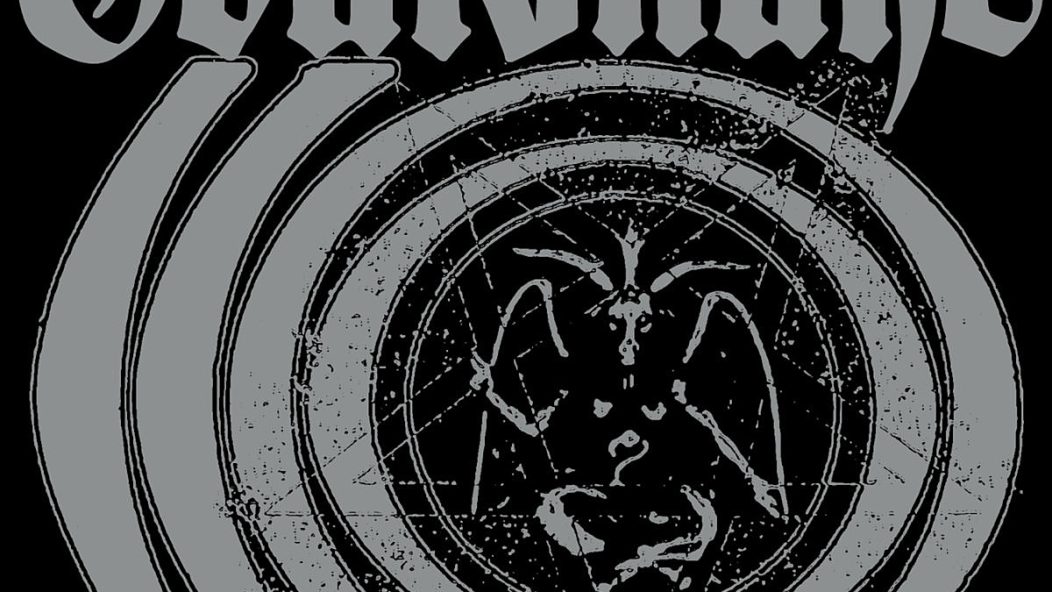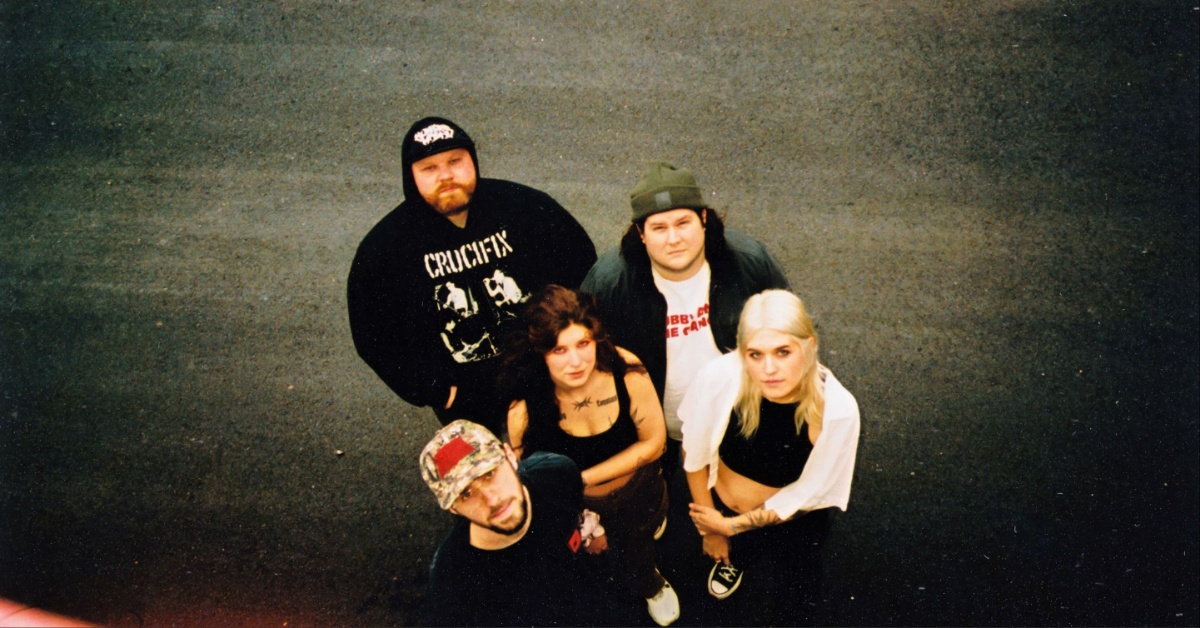
How Goatsnake's Soulful, Bluesy Doom Blossomed On "1" (Interview with Greg Anderson)
Goatsnake’s 1 was a massive release for the now defunct Man’s Ruin Records—doom metal with plenty of blues and soul sensibility played with a maximum amount of distortion, so as to not alienate the sludge crowd. It was a complete musical package. Whether it be Greg Anderson’s (also of Sunn O))), Thorr’s Hammer, etc.) song structures and riffs or Pete Stahl’s soulful croon, or that the rest of the band at the time was just the rhythm section from The Obsessed, there were a lot of variables that helped their debut record take off.
In light of the band’s imminent vinyl re-release of their debut album through Anderson’s Southern Lord Records, it felt like the right time to hear from the man himself. We talked at length about his musical journey that took him from Seattle to SoCal, playing a fateful gig with Engine Kid to a group that included those members of The Obsessed, and what records, bands, and band members helped him to shape one of the loudest records that I have ever heard. Their southern rock-tinged doom came with a very different vocal style and riffs that could level a major city; it made for a unique package and that’s why 1 remains a classic to this day.
…
…
Take me through what it was like to work with Man’s Ruin Records back in the day, considering that the label itself had such a short shelf life, it still had a ton of influential records. What was it like?
It was a great label at the time, and they put out some great records. It was an honor to work with them. The record was also released overseas on Rise Above Records and seeing as I was in my late ‘20s at the time I really looked up to a bunch of bands on both labels. Lee Dorrian of Cathedral and Napalm Death fame and Rise Above Records was the only label at the time that was putting out doom metal records like ours, one of the first to truly support the style. It was a dream come true to be a part of that. We were big fans of Frank Kozik and the bands he curated for that label.
Since the other members of the band were older than me and they were my heroes, I was the new kid, the young kid and just in awe of them in general. We had the rhythm section from The Obsessed and Pete Stahl from Scream and Wool; stepping into that situation made it special. They had been around the block, they had already played with Saint Vitus, Trouble, Eyehategod. It was an honor and truly validating to even be included with these guys.
What was the rest of the band like?
The rest of the band was very up front with me, they didn’t write music. They had seen me perform in my other band, Engine Kid and were impressed. They said “We were expecting you to come up with music.” It was pretty overwhelming being the nexus of this band considering what these other guys had already done, it was humbling.
In general, 1 was a truly transformative experience for me as a listener. I couldn’t remember a time when I felt like my speaker was going to vibrate apart, and then I heard “Mower” and it was something else entirely. What brought about this volume war?
An influential band for me was The Melvins. I grew up in Seattle and had seen them plenty of times as a kid, it really had an effect on me. The massive amount of volume, it was what Goatsnake became about. We played through as much amplification and cabinets as we could or at the outset, just what we could afford, which wasn’t a lot.
We practiced in a space that was like a massive concrete bunker, The Melvins also used to practice there. It was above ground, had windows and faced the LA River, facing a bleak part of town. The sound reverberated off the walls and was deafening. It was our mission to play as loud as we could. Our drummer Greg (Rogers) was one of the loudest I had ever heard before, right from the crack of his snare drum; it pierced through your body. Guy (Pinhas), the bassist had a massive stack of cabinets, and a silly, huge power amp. It was a competition to keep up with one another. That was why we became so painfully and ridiculously loud.
Time-wise this record was in between that Thorr’s Hammer EP and your first record with SunnO))). What changed in your play style over the course of those few years?
About 1994-1995 I met Stephen O’Malley and we started playing in Thorr’s Hammer in Seattle. I was still in Engine Kid at the time, but I wanted to do a project with Stephen and the music that we were into was more in a metallic direction such as Celtic Frost, Hellhammer, Cathedral and he introduced me to Norwegian and Scandinavian black metal; we listened to a lot of metal together. Our singer Runhild Gammelsæter was a Norwegian exchange student, and she was studying at the University of Washington. Unfortunately, she had to go back home, but Stephen and I still played together with our drummer from Thorr’s Hammer and that’s when we formed Burning Witch.
Wino had left The Obsessed and the rhythm section were still looking for someone to play with. They saw Engine Kid in Los Angeles and decided they wanted to jam with me. My taste in music was getting heavier over time. We did a ton of experimenting with different dynamics, hardcore, and just wanting to play in a metallic direction.
The ability to pull from blues and acts like Black Oak Arkansas helped to make Goatsnake the act of yours I most closely relate with. What helped draw out more of those influences?
Goatsnake maintained the want to worship Sabbath, the rest of the band had a lot of different rock and blues influences going on, Pete’s vocals were more melodic, and it added another layer of depth with some blues and soul elements. I was also listening to a lot of The Allman Brothers and Lynyrd Skynyrd, the latter part of that came from Greg Rogers’ influence. It got me really into that sound. The band was a combination at one time of Sabbath and Skynyrd, but we all really liked Eyehategod, however Pete as the singer was our X factor. It really made us different then and still makes it that way today.
Pete really seems as though he helped to be the cherry on top of this complete package.
Having a contrast between the ultra-heavy and with something sweet, it was a contrast we were really into. A real dichotomy in sound: down tuned, ridiculous and will appeal to bands like Disembowelment, Eyehategod and Winter, these heavy bands, but the vocals made it more unique.
When the weather gets warm and the windows go down on the car, 1 is usually one of the first records I typically turn to in Spring. California isn’t a particularly doom-influenced part of the country, is it?
People used to ask me, how I could be so into doom, but live in southern California? Which is a good point, but Goatsnake took on some of the atmosphere of our surroundings. I was listening to Kyuss a lot at the time and Pete used to spend a lot of time out there and he was friends with Josh Homme and was around during the formation of Queens of the Stone Age. Kyuss was so powerful to me back in ’95. We used to jam a lot with people who liked heavy music like ‘70s obscurities like Cactus and Captain Beyond, Josh even joined in on a couple. He even went to The University of Washington too. We could all tell that Josh had a vision for something that was completely his own; he “big-leagued” us in a way, not spitefully of course.
Corrosion of Conformity was another cornerstone band, especially the Pepper Keenan albums Deliverance and Wiseblood. They kept putting out different records and amazing ones at that, I kind of evolved with their sound from the hardcore to the stoner stuff. Just another big influence for us.
What was it about now that you wanted to re-release the record now?
It was a big album for me personally and for the label. We took it over a few years back with the Dog Days EP but had never put it out proper. I wanted to put it out as it was originally intended again. It helped me become who I am and the path that I have taken since then. It would be something special to do it this way.
Something about the organic nature of the recording?
I think archival releases are incredibly important, and we do a lot of that at Southern Lord and it is one of my favorite parts of running the label. But yeah, there is something to getting back to the original layout of an album. 1 was truly encapsulated in those eight songs, the core of everything that came after it.
Any plans for anything for Goatsnake going forward?
There is no chance for the band to do any shows or recordings. It’s interesting: all of us in the band are still very close, but we are just doing other things with our lives. Sometimes I regret that nobody in the band had the time to dedicate to it, for what it deserved and what it needed. This band really deserves more of all our attention, so that we can get it to the potential that we know it can. We have families and jobs, being able to accept that’s where the band is today, was hard. We would play some gigs and people were interested but we would come to the same realization.
I love playing music with those guys, but we just don’t have the proper time to give this band, however we all love each other and remain great friends. Moments like this remind us of how special this time was. We don’t need to reform with non-original members just to say we can, there’s nothing wrong with bands doing that, but that’s not us. There is no way we can recapture the way things were when we formed. Let’s celebrate things for the way they were.
…
1 released May 21st, 1999 via Man’s Ruin Records, and is being reissued on vinyl via Southern Lord.










